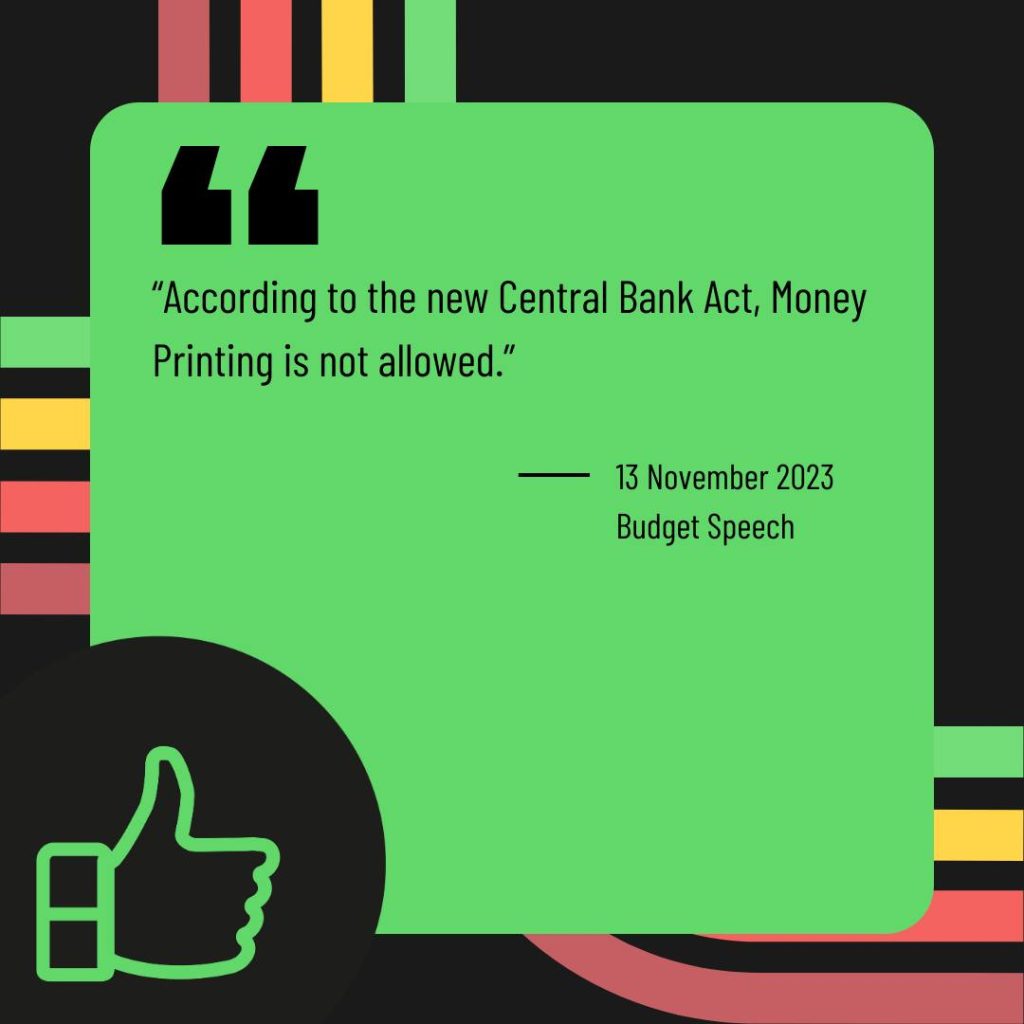BudgetCheck 2024
#BudgetCheck by FactCheck.lk returned for the fourth consecutive year on 13 November 2023. The team fact-checked a total of eight statements from President Ranil Wickremesinghe’s budget speech for 2024. Of these, six statements were graded as True and two of them as False. See below for statements fact-checked along with their narrative, verdicts, and relevant sources.
Number 1
Fact check: The president is correct, if the statement is read to mean that it is not possible to secure any more monetary financing until January 2024. Read the full fact-check at: https://bitly.ws/ZPvC

Number 2
Fact check: The last available annual figure available for 2022 shows that salaries and wages amount to 55% of the tax revenue. However, this figure is reduced to 36% from January to August 2023.


Number 3
Fact check: International Monetary Fund’s (IMF) governance reports cover the Central African Republic, DRC, Zambia, and others—no Asian countries yet. Sri Lanka is the first in Asia to undergo the IMF diagnostic.
Read our previous fact-check on this: https://bitly.ws/Q2Vh

Number 4
Fact check: Published reports show the government’s tax revenue has increased by 50% in the first six months of the year 2023, and by 51% in the first nine months.


Number 5
Fact check: The president is citing what was reported by the government, that there was a primary surplus of LKR 30.72 Bn in the first 6 months of 2023. However, this reported figure was later seen as a misrepresentation.
The International Monetary Fund (IMF) review in September noted that Sri Lanka had failed to adhere to the commitment of not carrying expenditure arrears (expenditures not recognised in the account). This is corroborated by the primary balance being reported as a deficit of LKR 27.41 Bn at the end of month 7, just one month after reporting it as a surplus.

Number 6
Fact check: World Trade Organisation’s Trade Facilitation Database reveals that Sri Lanka’s progress in implementing agreements since 2017 is below the average progress of Least Developed Countries (LDC).
Implementation progress (2017 to June 2023)
Sri Lanka – 31.5%
LDC Average – 41.4%
The percentage of trade facilitation measures which Sri Lanka says it cannot implement without external assistance is also higher than the average for least-developed countries (LDC).
Percentage of measures requiring external assistance:
Sri Lanka – 69.3%
LDC Average – 40%

Number 7
Fact check: The reserve figure of USD 3.5 billion mentioned for August 2023 is correct and includes a USD 1.3 million swap arrangement from the People’s Bank of China (PBOC).
When reserves were at their lowest point in April 2022, the PBOC swap (which was not expendable) was reported as USD 1.5 billion. Thus, the increase in reserves cannot be more than USD 2 billion (3.5 – 1.5), which makes the claim of a USD 3.5 billion increase incorrect.

Number 8
Central Bank of Sri Lanka data reveals a two-decade decline in exports as a percentage of Gross Domestic Product (GDP). In 2002, it was 28%, falling to 17% in 2022. Despite this overall trend, the 17% in 2022 was an increase compared to the previous 10-year average of 13%.



